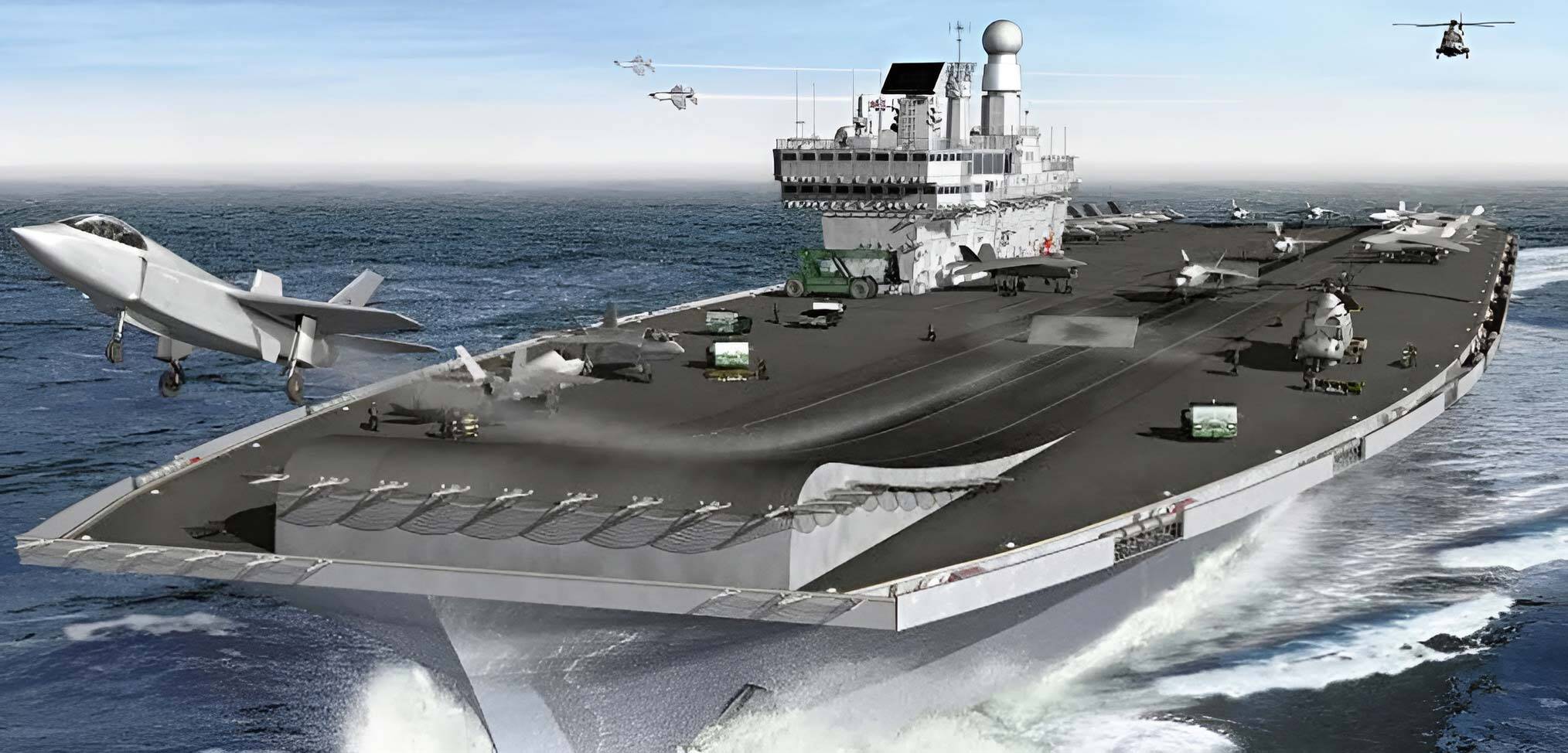Purpletrouble
ACCESS: Secret
- Joined
- 16 September 2019
- Messages
- 449
- Reaction score
- 420
CVF was always going to replace the LPH role. I was briefed on that as far back as 2003? when I first worked with the program. The only vague notion was LHDs as replacements for the Albions.
The idea was for a flexible ship able to do anything albeit largely dominated by the strike case. Hermes in 82 was often mentioned and there was a big picture of this in one of the offices. Note how Ark Royal operated in 2003.
It seems to have been the media and enthusiast world that really went down the simplistic “strike carrier” route, not helped by the politicians (civil and uniformed!), and excerbated by the brief CATOBAR excursion led by the ill informed Fox et al, rapidly restored. The RN had a more nuanced view and much of it did (and does) resent the (over) concentration of resource on them. The lack of afloat support and even airframes was described as “(evidence) this bloody project was completely ill conceived and unfunded” by a submariner I know.
If you go back to early CVF videos you’ll see Chinooks, Apaches on humanitarian and peace keeping missions. Hence why interoperability was there from the outset.
The problem has throughout been that SDR98 was, finances wise, fiction. What was proposed as a force structure and the replacement kit require could not be acquired for the stated costs. Hence the endless cuts to get programs within cost (T45) or cut entirely.
All of this has been done with political and financial considerations driving the decisions, and hence the structure, which appeared balanced is now very distorted. The RN which was expected to be a globally deployed force able to concentrate when needed, is now very increasingly built around just one pillar.
As an alternative - the Italian/Spanish ships seem just as suited to the expected UK deployable fast jet force and are better designed for multi-role ops. Yes “air is free, steel is cheap” but the difference between their and CVF costs would have say funded additional surface ships.
I think the loss of littoral capability, which these ships are far better suited to, is far more damaging than the gain of a large airfield from which relatively little can be done that host nation facilities cant provide, and having been part of maritime ops- host nation access is vital anyway, including for air bridge of people and kit plus sustainment logistics.
The idea was for a flexible ship able to do anything albeit largely dominated by the strike case. Hermes in 82 was often mentioned and there was a big picture of this in one of the offices. Note how Ark Royal operated in 2003.
It seems to have been the media and enthusiast world that really went down the simplistic “strike carrier” route, not helped by the politicians (civil and uniformed!), and excerbated by the brief CATOBAR excursion led by the ill informed Fox et al, rapidly restored. The RN had a more nuanced view and much of it did (and does) resent the (over) concentration of resource on them. The lack of afloat support and even airframes was described as “(evidence) this bloody project was completely ill conceived and unfunded” by a submariner I know.
If you go back to early CVF videos you’ll see Chinooks, Apaches on humanitarian and peace keeping missions. Hence why interoperability was there from the outset.
The problem has throughout been that SDR98 was, finances wise, fiction. What was proposed as a force structure and the replacement kit require could not be acquired for the stated costs. Hence the endless cuts to get programs within cost (T45) or cut entirely.
All of this has been done with political and financial considerations driving the decisions, and hence the structure, which appeared balanced is now very distorted. The RN which was expected to be a globally deployed force able to concentrate when needed, is now very increasingly built around just one pillar.
As an alternative - the Italian/Spanish ships seem just as suited to the expected UK deployable fast jet force and are better designed for multi-role ops. Yes “air is free, steel is cheap” but the difference between their and CVF costs would have say funded additional surface ships.
I think the loss of littoral capability, which these ships are far better suited to, is far more damaging than the gain of a large airfield from which relatively little can be done that host nation facilities cant provide, and having been part of maritime ops- host nation access is vital anyway, including for air bridge of people and kit plus sustainment logistics.

